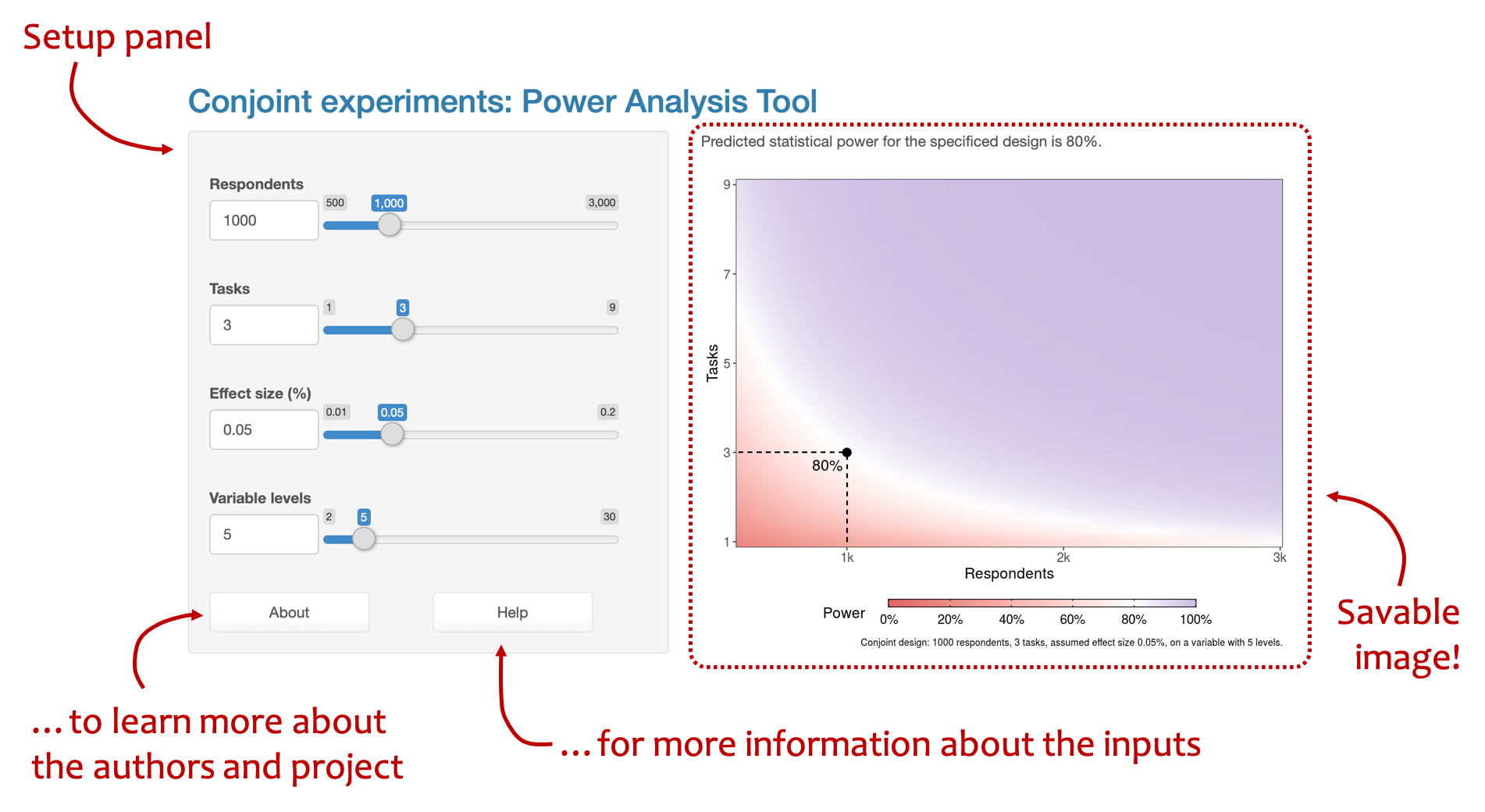Conjoint survey experiments and power analysis
Published:
Are you running a conjoint experiment and struggling with design considerations? Unsure about how many respondents, trials or levels for a variable are needed? This Shiny App for calculating power of a conjoint experimental design is here to help you.
We are currently working on a paper that would offer more in-depth explanation. You can find some of the results of our work and descriptions in this short Twitter thread. A full research paper will follow shortly!
How to use the App?

Setup
The Shiny app calculates power of a simple conjoint experiment design based on the Hainmueller et al (2014) framework. At the present stage, it has four inputs:
- Respondents: Number of respondents that are going to answer the survey.
- Tasks: Number of tasks each respondent will receive (sometimes called trials or selection tasks).
- Effect size: The expected effect size in %. This is the expected Average Marginal Component Effect (see Hainmueller et al. (2014)
- Variable levels: Number of levels of your categorical variable — i.e. gender (male vs. female) has two categories. Use the number of levels of the attribute with the highest number of levels to obtain a power of the experimental design as a whole (lowest threashold).
In the next iterations, we will add also Type M and S error rates (see Gelman and Carlin 2014). We would also like to add more features, such as calculating power of an interaction between attributes and subgroup analysis.
How to run it locally in RStudio?
The app is running on shinyapps.io, which provides only limited free hours of computer time for running Shiny apps. We are paying the standard subscription for this app, which should cover the run-time of majority of requests. However, if you see the page down or you struggle loading it in your browser, we offer an alternative you can run locally. Just follow these steps:
1. Prepare your computer
First make sure that you have the most up-to-date version of R and RStudio downloaded. Make sure you have Git installed on your local machine (a short guide here). It is good practice to restart your computer after installing new software to make sure it works properly.
Open RStudio and install the necessary libraries by running the following command:
install.packages(c("shiny", "ggplot2", "shinythemes", "shinyWidgets", "shinydashboard", "ggrepel"))
2. Get the App
In the second step, you will download the App locally to your computer. Copy the following link:
https://github.com/mblukac/conjoints-power-shiny.git
Open RStudio and follow these steps. In the last window, paste the copied URL ☝️ to Repository URL.

When you hit Create Project, RStudio will connect to GitHub and get the newest version of the App to your local computer.
3. Run the App
Go to console and run the app script by typing (or copy-pasting) the following:
source("app.R")
This will make sure that all the libraries are properly loaded and ready to run the App.
In the final step, run the follwing command in the console:
runApp("app.R")
This will run the application locally on your computer. You can always re-run runApp("app.R")if you close the window with the App. If RStudio doesn’t open the App for you after running runApp("app.R"), look to the console for the following lines:
Listening on http://127.0.0.1:xxxx
The last part (:xxxx) will be specific to your instance. Copy and paste the whole link http://127.0.0.1:xxxx to your browser. This should open the App for you. Enjoy!
Cite
We put a lot of work into this, so please don’t forget to cite our work if you use it.
Lukac, M. & Stefanelli, A. (2020). Conjoint Experiments: Power Analysis Tool. Retrieved from https://mblukac.shinyapps.io/conjoints-power-shiny/
I cannot stress this enough, 🔥please🔥 get in touch with your feedback or questions. It will be immensely helpful for us to hear what the community thinks about this, so that we can all develop something useful for everyone.
